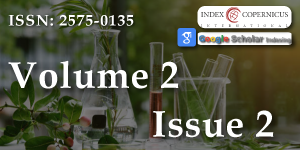Life history strategies of the armored scale, Aulacaspis alisiana (Hemiptera: Coccoidea: Diaspididae) on the Japanese silver tree Neolitsea sericea (Bl.) Koidz. (Lauraceae) in Fukuoka, Japan
Main Article Content
Abstract
The armored scale Aulacaspis alisiana, is a serious invasive pest of the Japanese silver tree, Neolitsea sericea, causing serious damage to the tree in Japan. However there are currently no control approaches available for it, complicated by shortage of information on the pest. We studied life history strategies of A. alisiana on N. sericea in Fukuoka Prefecture with a view to providing a basis for formulating sustainable control based on an understanding of the behavior of the pest and potential role of its natural enemies. We established that A. alisiana had three overlapped generations in Fukuoka, with generation times ranging between 65 and 71 days. The adults were relatively fecund, with each female producing between 60 and 67 eggs, with high hatchability, >78%. The pest settled on the lower side of leaves, and although it generally preferred younger leaves, it did not attack newly emerged leaves. Natural enemy groups comprising ants, spiders and beetles (coccinelids) played an important role in regulation of the pest population, with natural mortality of about 30%. They could thus form a critical component of an integrated management approach for the pest in Fukuoka.
Article Details
Copyright (c) 2018 Midega CAO, et al.

This work is licensed under a Creative Commons Attribution 4.0 International License.
Fu LG. Chinese plant red book. Beijing: Science Press. 1992.
Wang ZS, An SQ, Liu H, Leng X, Zheng JW, et al. Genetic structure of the endangered plant Neolitsea sericea (Lauraceae) from the Zhoushan Archipelago using RAPD markers. Ann Bot. 2005; 95: 305-313. Ref.: https://tinyurl.com/y9zenhsu
Furuno T, Terada Y, Yano S, Uugara T, Jodai S. Activities of leaf oils and their components from Lauraceae trees against house dust mites. Mokuzai Gakkaishi. 1994; 40: 78-87. Ref.: https://tinyurl.com/ya74f8wv
Hodges G, Howard FW, Buss EA. Pest Alert: Update on management methods for cycad Aulacaspis scale. 2005. Ref.: https://tinyurl.com/y9au4rah
Vranjic JA. Effects on Host Plant. World Crop Pests. 1997; 7: 323-336. Ref.: https://tinyurl.com/ya9f945n
Ozaki K, Kitamura S, Subiandoro E, Taketani A. Life history of Aulacaspis marina Takagi and Williams (Hom., Coccoidea), a new pest of mangrove plantations in Indonesia, and its damage to mangrove seedlings. J Appl Entomol. 1999; 123: 281-284. Ref.: https://tinyurl.com/ycomxsrq
Midega CAO, Khan ZR, Van den Berg J, Ogol CKPO, Pickett JA, et al. Maize stemborer predator activity under ‘push–pull’ system and Bt-maize: a potential component in managing Bt resistance. Int J Pest Manage. 2006; 52: 1-10. Ref.: https://tinyurl.com/ydcu65er
R Core Team. R: A language and environment for statistical computing. R Foundation for Statistical Computing, Vienna, Austria. 2014. Ref.: https://tinyurl.com/nksjxfx

